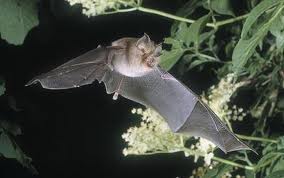





Enter your garden at night and you will find yourself in a world full of secretive noises and darting flights. If you are lucky, you will see bats flitting silently past in the last of the evening light, and as the light fades the ghostly shadows of moths will be drawn to the light of an un-curtained window. Listen for the grunting of a hedgehog rummaging in the grass for slugs and snails, or the rattle of foxes raiding dustbins in search of easy food. High up, owls may hoot in the still of the night, and at your feet a veritable army of nocturnal insects and small mammals will be busy searching for food.
Many insects, including stag beetles, millipedes and earwigs, emerge at night when it is cooler and the darkness makes them less obvious to their predators. For similar reasons, slugs, snails, woodlice and earthworms are also nocturnal. Mammals, such as hedgehogs and badgers, that feed on these night-time wanderers have, therefore, adapted to a nocturnal way of life in order to exploit the potential midnight feast. Some of the smaller nocturnal mammals, like wood mice and dormice, are nocturnal feeders and so are, in turn, food for the owls hunting at night.
Moths are related to butterflies and share the same life cycle: the adult moths feed on nectar, mate and then lay their eggs on the food plant of the larva or caterpillar. When it is large enough, the caterpillar pupates and the adult moth emerges. Most moths rest by day and start flying to find nectar in the evening. The largest and most dramatic are the hawk-moths, many of which are now rarely seen, but the elephant, lime and privet hawk-moths frequently visit gardens at night to feed on honeysuckle.
There are a number of delightful plants that have flowers which open at the end of the day and stay open into the night. Many of them are scented; the fragrance attracts moths for nectar and thereby ensures that the flowers are pollinated. Moths are attracted by white or light-coloured flowers, which tend to glow in the pale evening light; for this reason, night-scented flowers are usually white, cream, yellow or pale pink. To grow night-scented plants, select a sheltered site by the house, and near a window, so that when they are established you can watch the moths visiting the flowers without disturbing them, although it is also pleasant to sit outside and enjoy the evening fragrance yourself. The plants recommended for attracting moths usually prefer a fertile, well-drained soil.

Bats fly in the evening and night, feeding mostly on moths and beetles, so the more moths you attract into the garden the greater the likelihood of attracting bats. If you want to have resident bats then you need to provide roosting sites for nesting and hibernating. Your local bat group should be consulted about bats in your area and about the most appropriate roosting sites and bat boxes. Bats are protected by law: it is illegal to destroy roosting sites or bat boxes.
Copyright © www.100flowers.win Botanic Garden All Rights Reserved